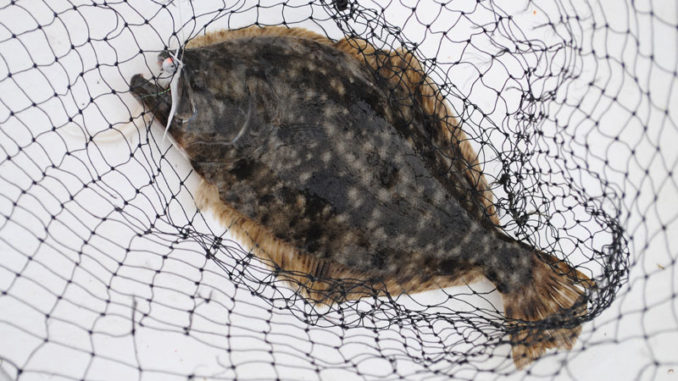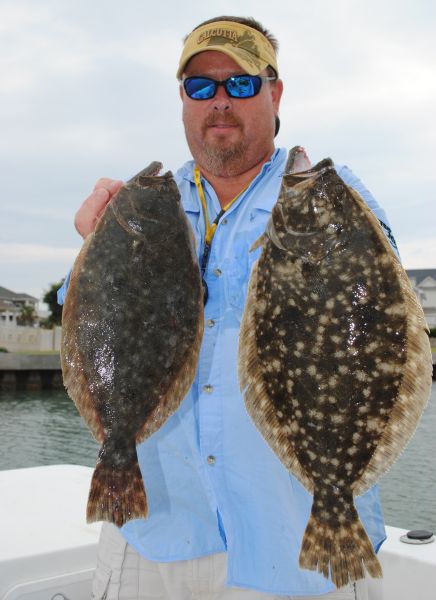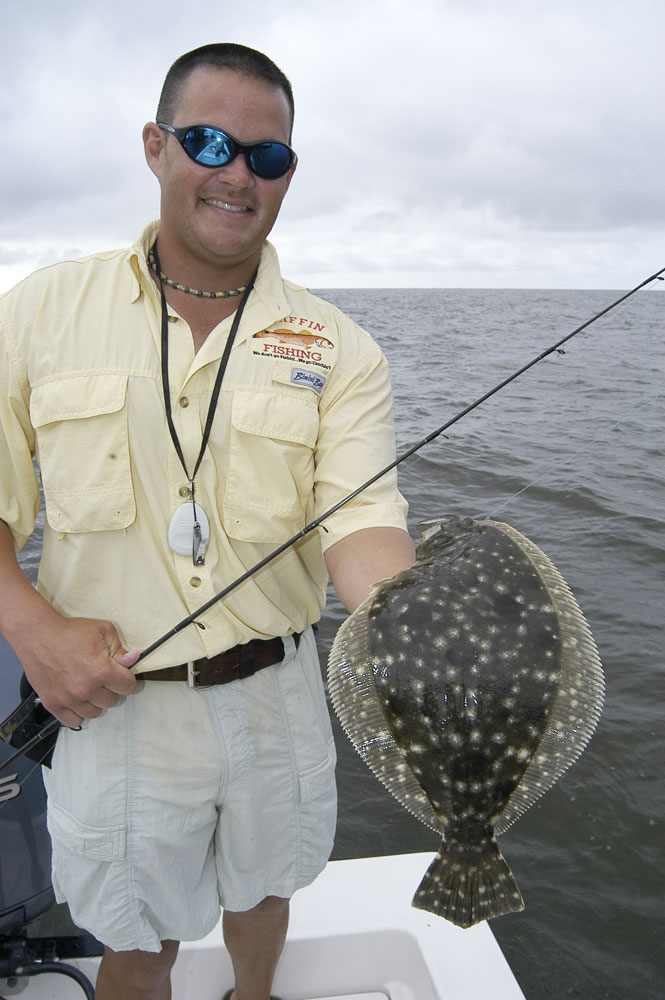
Find a ditch, a dock and an oyster bed — all in the same immediate area — and you’ve got the makings of a great place to catch a late-summer flounder.
Dale Collins knows the equation for great late-summer flounder fishing.
First, he said, you find a little ditch that’s draining an area of marsh into a larger waterway. Second, you find a boat dock or pier next to the ditch. Third, you find an oyster bed near the first two.
The combination of those three, according to Collins, a veteran guide and flounder expert, “is a gift from God.”
Ditches draining a marsh draw flounder and other predator fish on a falling tide because all of the bait and shrimp are pulled out by the current. That sets the table for big flatfish, and the current has a second major plus.

“If you’ve got a little current running out of there, (a flounder will) there with his nose in the mouth of that ditch, because he can stay there for a long time with that water running through his gills; it’s easier for him to breathe,” Collins said. “If you don’t have any current, he’s got to move around more.”
The boat dock provides an ambush spot, plus shade, for a flounder. And the collection of oyster rocks will attract all kinds of bait and crustaceans, further setting a flounder’s buffet.
“I’ll fish live bait or a Gulp bait at the mouth of a little ditch or under a dock,” Collins said. “As far as live bait, I like a 4-inch mullet minnow, but you’ve got to feed it to him before you set the hook — wait a little bit.
“I’ll fish a Gulp bait on a 1/4-ounce jighead. I’ll fish it on as light a head as I can, because I think most people fish too fast.”
Collins said if he’s working the mouth of a ditch or drain, he tries to position his boat so he can cast directly into the opening.
“If the water is pulling to one side, I’ll set up for that, but I want to cast right into the middle (of the drain) and fish it out,” he said. “If there are points on either side of the ditch, I’ll fish across those, too.”

If he’s fishing a dock, he’s more interested in getting his bait back under the platform and working it back to the boat. Because flounder make their own ambush points by settling down into the sand on the bottom, positioning close to pilings isn’t quite as important as it would be if he was looking for redfish.
One good thing about flounder, Collins said, is that if you put a bait or lure in front of them, they aren’t terribly picky.
“I’ve fished times when it was hard to get bait, and I caught flounder on five different live baits,” he said.
That doesn’t mean he just camps out.
“I won’t fish a spot very long unless I catch a fish,” Collins said. “If I catch a fish, I won’t fish it more than five minutes if I don’t catch another. I’ll move to my next ditch or dock.”
Collins said he’s constantly amazed by the kinds of places he finds flounder.
“They’ll get in water in places where you can’t get your boat,” he said. “I’ve see them way up in the marsh grass while gigging, in only 2 or 3 inches of water. That’s all they need.”


